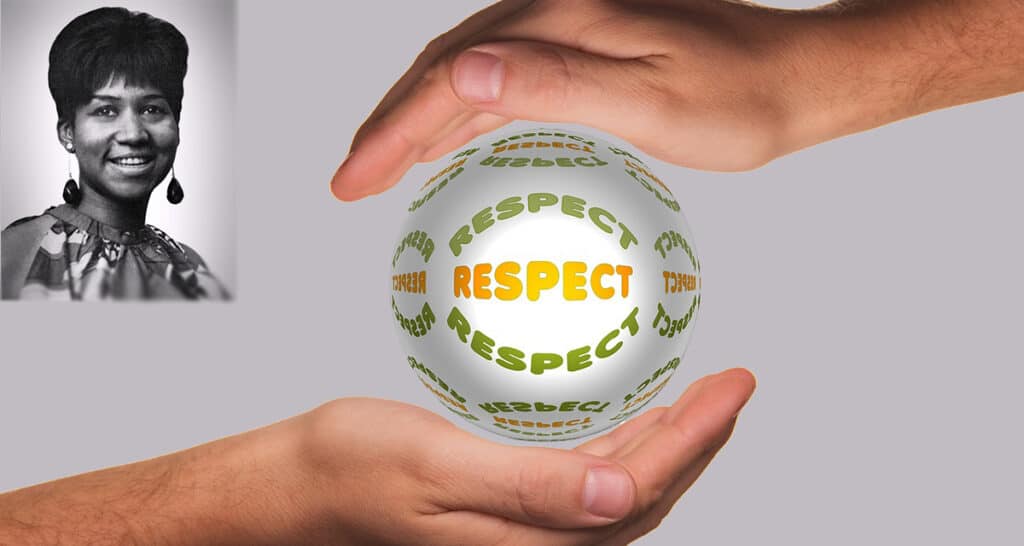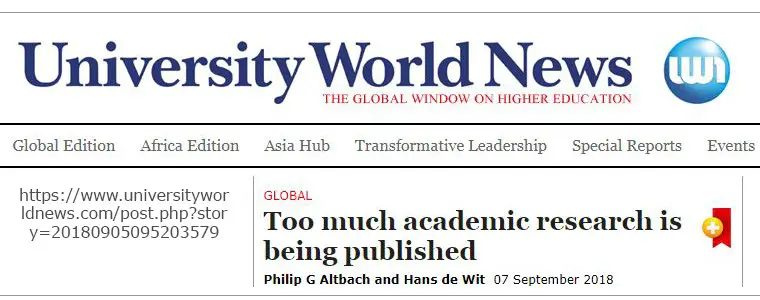Disclosure: This page may contain affiliate links. This means, at no additional cost to you, we receive a commission if you click through and make a purchase.
There are certain standards that we expect from a scientific publisher, not only in how they conduct themselves but also in how they maintain the scientific archive.
As a publisher of a scientific journal, there are three important principles that must be respected. These are 1) ensuring that you have a robust peer review process, 2) once published the paper should NOT change and 3) the paper should be available forever with the SAME content as when it was originally published. If a paper is retracted, it should be done in the appropriate way and not simply deleted.
In this article, we touch upon these three elements that we would expect from a scientific publisher and question whether a predatory publisher is able to uphold these principles.
We start though, with some introductory remarks on the scientific archive.
Background
We can trace the scientific archive back to 1665, when two journals were started. The Journal des Sçavans was the first scientific journal, starting publishing in January 1665, with the Philosophical Transactions of the Royal Society of London following soon after in March 1665.
The Journal des Sçavans stopped publishing in 1792, during the French Revolution. Philosophical Transactions is still published today, making it the longest running scientific journal in existence.
The journal that first introduced peer review was the Medical Essays and Observations, which started publishing in 1731.
Since those early days, there has been a proliferation of scientific journals. Some would say that there are too many, with a 2018 University World News article saying:
“No one knows how many scientific journals there are, but several estimates point to around 30,000, with close to two million articles published each year.”
Predatory publishers and journals have added to this number with a 2015 paper (‘Predatory’ open access: a longitudinal study of article volumes and market characteristics) saying that the number of articles published in predatory journals had increased from 53,000 in 2010 to 420,000 articles in 2014. These articles were published by about 8,000 journals. Given that these figures were reported about six years ago, we can only assume that the figures are now a lot higher.
Peer Review
One of the pillars that supports the scientific archive is peer review. For a scientific paper, to become part of the archive it has to be reviewed by experts who recommend whether the research that is being reported should be accepted by the journal. In coming to a recommendation, the reviewers and editors will look at whether the research is reproducible, does it report something new, does it advance knowledge and are the results/conclusions in the paper correct and logically argued. The paper should also be rigorous in its approach, the research should be discussed in the context of previous research and the authors should act with integrity and follow ethical procedures. Only then can the paper be accepted into the scientific archive and be made available for future scholars and generations.
Peer review is an aspect of predatory publishing that is often seen as the most problematical. There is a suspicion that predatory publishers/journals are more interested in receiving article processing fees, than carrying out high quality peer review. Indeed, there is a concern that no peer review is conducted and sting operations have shown that predatory journals have very little peer review, if any at all.
Papers that have not been subject to strict peer review have no right to be part of the scientific archive. Not only does it result in research which has not been validated appearing in the archive, but other researchers may try and build on this work in their own research. This is not only a waste of time and energy but is also potentially dangerous. The results of the research could be used by pharmaceutical and construction companies, to name just two sectors, to develop drugs or as the basis for construction projects. If assumptions are made using results from non-peer reviewed papers, this could lead to very bad consequences. Of course, any company would validate the results themselves before investing in them, but, at best, they are wasting their time, and probably money.
Without a robust peer review system, the idea of “Standing on the Shoulders of Giants” is no longer credible as you cannot have any confidence in who the giants are and who is trying to impersonate giants.
A depressing consequence of the scientific archive becoming infected by predatory journals is that the archive falls into disrepute and/or every scholar has to go back to first principles for every paper they write which, of course, in totally unrealistic.
Papers that are published by a predatory journal, without proper peer review, are able to become part of the scientific archive, with the author being able to say anything. If you don’t believe this, this take a look at one of our previous articles, which should convince you that it is possible to publish literally anything. This is not only problematical from the “standing on the shoulders of giants” perspective but it also gives a route for companies to publish results and conclusions which have not been validated but which could be used by commercial organizations to promote goods and services. It must be tempting for some companies to publish their “results” in a predatory journal so that they can refer to them in their marketing material, demonstrating the worth of their product or service?
The paper should not change
A second important pillar in the context of the scientific archive is that the reader has the right to expect that what they read is exactly what the author wrote. As an example, if you consider the paper that described Garry Kasparov’s, the then world chess champion, defeat against Deep Blue, you know that you are reading what the three authors wrote. Not only was the paper peer reviewed, but you also know that the final camera-ready paper that was submitted is the same as the one that you can download.
If you compare this to, say, this blog post. You might read it and cite it in some way. After you cite it, we may edit the blog, changing it so that it no longer represents the reason that you cited it for. Indeed, it may be the case that the blog now represents a totally opposite viewpoint to the one that originally caught your attention.
It is even worse in areas such as Wikipedia pages (which is a great service it has to be said), which can be edited by anybody and those authors can be anonymous. So, not only can the text change from one week to the next but it can be edited by anybody; and sometimes, people have been known to edit Wikipedia pages in a way that totally misrepresents the topic under discussion.
Peer review for Wikipedia is undertaken by the “crowd”. That is anybody can validate the article and make corrections. This often (more often than not) leads to good quality information, but it cannot be relied upon for scientific papers.
In the context of the predatory journals, we suspect that most of the time, the final version of the paper that is submitted is the one that appears on their web site. But there is a slight unease that the paper could be changed and there is no way to check that.
For example, if the journal does not have a permalink system (such as using DOI’s) then it might be difficult to validate when the paper was assigned a permalink and on what date. We are not sure whether you can request this information from the organization who is managing the DOI but it should be possible if there is a major dispute. Having said that, most journals, even predatory ones, do use DOIs, which does give come semblance of the permanency of a paper. You might be interested in our article on DOI, which asks if a DOI is an indicator of quality?
Of perhaps more worry are those journals where it is difficult to find and/or contact an Editor-in-Chief. For most (all?) high quality journals they have an appointed Editor-in-Chief who is a recognized expert in the discipline addressed by the journal. For some predatory journals, they either do not have an Editor-in-Chief, there are no contact details or if you search for the person, they can be very difficult to find; let alone find a list of their publications.
Not having an Editor-in-Chief, or one that is very hard to contact, gives rise to concerns as to who is running and managing the journal. If the Editor-in-Chief is a recognized, high profile scholar then not only are they easy to find but they also have their own reputation to consider.
Having, or not, an Editor-in-Chief would obviously not be the reason for a paper to be changed after it is published but not having a recognized academic figure head for a journal is a concern as we cannot be sure who has overall responsibility for the academic integrity being maintained.
Available forever
A further pillar of scientific publications is that published papers should be available forever. The Deep Blue paper mentioned above is available now and will be for the foreseeable future.

Compare this to newspapers, which are a great source of information and are frequently cited, indeed, we have done so ourselves. The problem with newspapers though is twofold. Firstly, the articles are not peer reviewed, giving rise to the issues mentioned above. The second problem is that the article can be difficult to find if you want to access it. Many newspapers do have an archiving policy, but it is by no means standard and by no means available for every newspaper. If you cite a newspaper article, there is a high risk that a reader of your paper will not be able to access the article as there is no requirement on newspapers to make previous articles available.
The same is true, of course, of magazines, company reports etc. It is also true, to a certain extent, of books unless you are very careful with things such as editions, ISBN’s etc.
In the context of predatory publishers, there are examples where journals have been launched, published a number of volumes/issues/papers and then disappear without trace. There are also examples, often from sting operations, where papers have been accepted, published and then removed.
This is not the basis on which the scientific archive is built. If a paper is published in a peer reviewed journal, then that paper should be available for ever more, or at least a reference to it. If the paper does contain a mistake(s), or was published in error, then the paper should be retracted usual accepted practices, not just removed from the archive.
For example, if an error is found, then an Erratum should be published. This does not change the original paper, but is a note in a future issue of the journal about the error.
If a paper is to be retracted, it could be removed from the web site, but a place holder should remain, stating that the paper has been retracted. This means that anybody looking for that paper will know that it has been retracted. It should not simply be deleted.
Taylor & Francis, along with many have publishers, out what it means to correct or retract a paper.
Predatory publishers are not really concerned about ensuring that what they publish will be available forever. They will, and many do, maintain a web site which will contain all the papers that they have published. However, we feel that the commitment to maintain the integrity of the web site is possibly lacking. Whilst they are receiving papers (and money), the web site will be maintained, but what happens if a journal and/or publisher closes down, will the web site still be maintained?
Conclusion
This article has outlined three principles that are important when considering the integrity of the scientific archive.
Peer review is the main consideration with regard to predatory publishers, and is the procedure that is flouted most often.
However, maintaining the integrity of the archive also requires that papers are not changed after acceptance and that they should be available for ever. There are examples where papers published by a predatory journal are just deleted. These are often after a sting operation has been made public.
We are unaware of predatory journals changing papers once published but this, in our opinion, is a risk where there is a lack of transparency around the Editor-in-Chief.





